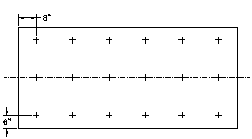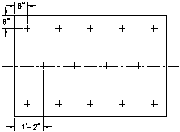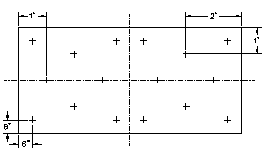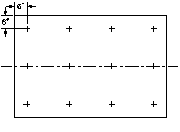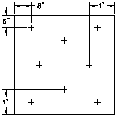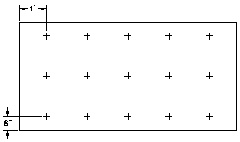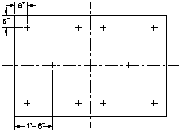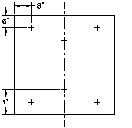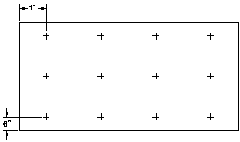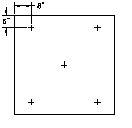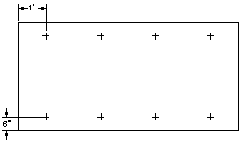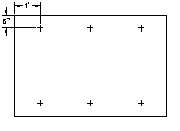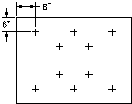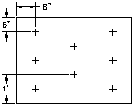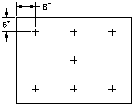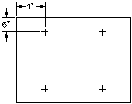Difference between revisions of "Template:All systems - INSULATION"
Difference between revisions of "Template:All systems - INSULATION"
(→Mechanical Fastening) |
(→Application) |
||
| Line 27: | Line 27: | ||
# <span class="principles">For heat sensitive insulation and heat insensitive foamed insulation, '''''RoofStar Guarantee Standards''''' should be consulted for fibreboard overlay requirements for Five (5) or Ten (10) '''''RoofStar Guarantee''''' requirements.</span> | # <span class="principles">For heat sensitive insulation and heat insensitive foamed insulation, '''''RoofStar Guarantee Standards''''' should be consulted for fibreboard overlay requirements for Five (5) or Ten (10) '''''RoofStar Guarantee''''' requirements.</span> | ||
# <p class="principles">The specifier should not simply reference the thermal performance for a roof assembly by specifying the total R-value. The generic type, thickness, C-value, and applicable standards of the insulation required for application should also be specified.</p> | # <p class="principles">The specifier should not simply reference the thermal performance for a roof assembly by specifying the total R-value. The generic type, thickness, C-value, and applicable standards of the insulation required for application should also be specified.</p> | ||
| − | |||
| − | |||
| − | |||
| − | |||
| − | |||
==== Layering ==== | ==== Layering ==== | ||
Revision as of 16:16, 11 July 2017
1 General
Only RoofStar-accepted insulation, specifically listed by membrane manufacturers in the RPM as acceptable for use with their modified bituminous loose laid, or mechanically attached base sheets, may be used without an overlay board in the RoofStar Guarantee Program.
2 Material Selection
See Accepted Roof Insulation products for RoofStar Guaranteed roof systems.
2.1 Polyisocyanurate Insulation
Only polyisocyanurate insulation with non-organic facers(e.g. fibreglass) are acceptable for use in the RoofStar Guarantee Program. In addition, manufacturers’ product identification labels are required for all Polyisocyanurate insulation packaging and the date of manufacture must be provided on all product labels.
See also Storage and Handling notes under the Polyisocyanurate section of Insulating the Roof in the Essential Elements section of this Manual.
2.2 Mineral Wool Insulation
Mineral wool insulation panels must be fastened or adhered according to the manufacturer’s published instructions and tested assemblies, but in any event must conform to the options shown in the table below.
- Permissible Conventional Roof Assembly - Mineral Wool Insulation
A Non-Coated Mineral Wool Base Insulation layer is permissible only by mechanically fastening, but may not have additional insulation layers adhered to it.
†† NOTE: All conventional roof systems with an overburden (see 10.1.1 & 10.1.2)require a ½” cover board over the top layer of insulation, regardless of its type. Adhere cover board only if top insulation layer is bitumen-coated.
3 Application
- The edges of insulation boards should be square, flush and have moderate contact with the edges of adjacent insulation boards. End joints between adjacent insulation boards must be staggered.
- On steel roof decks, deck flutes and felts should normally run in parallel alignment and be perpendicular to the roof slope. Insulation boards should be firmly supported by steel deck flanges. When only one layer of insulation is installed, the long dimension of insulation boards should not cantilever over steel deck flutes.
- For heat sensitive insulation and heat insensitive foamed insulation, RoofStar Guarantee Standards should be consulted for fibreboard overlay requirements for Five (5) or Ten (10) RoofStar Guarantee requirements.
The specifier should not simply reference the thermal performance for a roof assembly by specifying the total R-value. The generic type, thickness, C-value, and applicable standards of the insulation required for application should also be specified.
3.1 Layering
A staggered double-layer insulation system may provide the following benefits:
- elimination of thermal bridges, where leakage of heating or cooling energy may occur.
- reduced ridging, by eliminating through-joint migration of moisture vapour into the membrane, and subsequent deformation.
reduced ridging and splitting in the roof membrane.
All square edge flat format insulation boards greater than 67.5mm (2.7”) in thickness shall be installed in multiple layers. With the exception of systems that include tapered insulation, individual layers are not to exceed 60% of total insulation/overlay board assembly. Multi layering of plastic foam insulation is required for all adhered, mechanically attached, and ballasted low slope roof assemblies. In addition, all slope format plastic foam insulation boards greater than 150mm (6”) in thickness shall be installed in multiple staggered layers or alternatively, be installed under two (2) offset/staggered layers of RoofStar-accepted insulation overlay boards.
Insulation board joints are to be offset or staggered 300 mm (12") from adjacent layers and rows.
A minus offset tolerance of 50 mm (2") maximum will be permitted to compensate for variance in manufactured tolerance of differing insulation board widths and lengths. The exception is sloped insulation boards that are generally installed soldiered fashion to adjacent rows; and the first layer of overlay board over heat sensitive insulation to facilitate joint taping. However, the uppermost layer of insulation or overlay board directly below membranes shall have joints that are offset/staggered from adjacent layers and rows.
- utilize self-adhering seams for flame protection,
- are mechanically attached over decks listed by the membrane manufacturer, and
- are specifically accepted by the RoofStar Guarantee Program
3.2 Nailing Strips
Required on Slopes exceeding 1:12 (1" in 12"):
Where the total insulation thickness on nailable decks exceeds 25 mm (1"), nailing strips shall be mandatory on all insulated exposed membrane roofs utilizing asphalt-based adhesives (cold or hot-applied) and will be supplied and installed by the roofing contractor. These nailers should be nominal 89 mm (3- 1/2") wide and of a thickness equal to that of the primary insulation. Spacing of these nailers will not exceed four feet for horizontal application and two feet for vertical application.Fasteners for attachment of wood nailers shall be two minimum #12 non-corrosive exterior screws spaced a maximum of 400mm (16”) o/c. Attachment screws shall be embedded into support media a minimum of 37.7mm (1.5”) at all nailing strip fastening points. Nailers are to be covered by one layer of accepted overlay board. Fasteners used for attaching membranes to nailing strips(back nailing) shall be membrane manufacturer’s approved screws with plates or nails with a minimum 25 mm (1") head size. Spacing of fasteners or nails on nailing strips shall not exceed 300 mm (12") o/c for horizontal applications and 600 mm (24") o/c for vertical applications. Where deck nailing strips are required to secure roofing nailing or insulation nailing strips (e.g. in concrete decks), deck nailing strips shall be supplied and installed by others.
Consult the membrane manufacturer's published data for slope limitations.
Nailing strips are not required for use on RoofStar-accepted in-seam mechanically-fastened bituminous or non-bituminous flexible membrane systems. Heat welded or self-adhered SBS modified bituminous systems may be used without nailing strips provided RoofStar-accepted in seam fastener patterns are used throughout all base sheet seams (minimum 24" o/c) and head laps (minimum of 3 fasteners). All layers of insulation are recommended be additionally secured with polyurethane foam adhesive.
3.3 Mechanical Fastening
Fastener requirements are not the same for all deck materials. As plywood thickness and steel gauge increases, fastener pull-out strength increases, hence fewer fasteners are required.
3.3.1 General
When conventionally adhered roof assemblies are installed, (adhered, hot asphalt mopped, torched, etc.), all insulation must be mechanically fastened to all nailable decks including steel, with exceptions as per (reference here). The upper layer or overlay in a multiple-layer insulation application does not require mechanical fastening. The exception is for slopes exceeding 1:12 (1" in 12") or steeper - in those cases, the upper layer must be fastened.
Cavity deck or T Deck may be defined as either nailable or non-nailable, depending on profile and deflection.
Acceptable nail types: Shank-and-head or head-plate nails with minimum 25 mm (1") nominal head size. Head-plate nails with solidly attached plate to ensure plate cannot slide down on shank.
When using multiple layers of plastic foam insulation the layers shall be mechanically fastened, whenever possible, as if they are a single layer. Alternately, when the use of mechanical fasteners is not feasible, or multiple layered assemblies require mechanical fastening of the base layer only, or decks are constructed of non-nailable materials (concrete,) polyurethane foam adhesives may be utilized to adhere insulation layers to one another, to other insulations, or substrates. Only polyurethane foam adhesives that are specifically listed as acceptable by the insulation manufacturer may be used. Extruded polystyrene insulation must have planed faces (removal of smooth surface) when adhered with polyurethane foam adhesive.
The upper layer or overlay in a multiple-layer insulation application does not require mechanical fastening. If mechanical fastening to concrete decking is required proprietary concrete fasteners and plates must be used.
When insulation and or cover boards are installed under mechanically fastened membrane systems the membrane manufacturer’s tested and approved fastener layout patterns shall be followed. In addition, the minimum number of fasteners with plates for insulation and or cover boards, under mechanically fastened membranes, shall be six (6) fasteners for 1200mm x 2400mm (4ft. x 8ft,) board sizes and four (4) fasteners for all other smaller board sizes:
| Insulation Board Size | Field | Perimeter | Corner |
|---|---|---|---|
| 600 mm x 1200 mm (2'x4') | 4 | 4 | 5 |
| 600 mm x 2400 mm (2'x8') | 5 | 6 | 8 |
| 900 mm x 1200 mm (3'x4') | 4 | 6 | 7 |
| 1200 mm x 1200 mm (4'x4') | 5 | 6 | 8 |
| 1200 mm x 1800 mm (4'x6') | 6 | 8 | 12 |
| 1200 mm x 2400 mm (4'x8') | 8 | 12 | 15 |
- NOTE: Fastener locations are for optimum uplift resistance. Fasteners may be located within 50 mm (2") of position shown in diagrams in any direction.
| 1' x 2' | 3' x 5' |
|---|---|
 9 Fasteners 9 Fasteners |
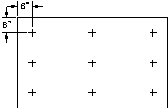 9 Fasteners 9 Fasteners
|
- NOTE: Fastener locations are for optimum uplift resistance. Fasteners may be located within 50 mm (2") of position shown in diagrams in any direction.
3.3.2 Heat Insensitive Insulation
In the case of heat insensitive insulation, one layer of acceptable overlay board is required. For hot asphalt applied roof assemblies the insulation is to be mechanically fastened before an acceptable overlay board is fully mopped to the insulation. Alternatively, manufacturers' proprietary insulation adhesives may be used to adhere accepted overlay boards to insulation. When hot asphalt or adhesives are not used in a roof assembly accepted insulation and overlay board(s) may, as a group, be mechanically fastened directly to nailable decks including steel.
3.3.3 Application to Steel Decks
The following procedures for installing insulation in roof systems should be followed:
- On steel roof decks, deck flutes and felts should normally run in parallel alignment and be perpendicular to the roof slope.
On steel roof decks, insulation boards should be firmly supported by steel deck flanges. When only one layer of insulation is installed, the long dimension of insulation boards should not cantilever over steel deck flutes.
When installing insulation or thermal barriers to steel decks, all edges of the first layer of insulation or thermal barrier shall be fully or intermittently supported by the deck. Mechanical fasteners must penetrate steel decks a minimum of 20mm (3/4") and must be located in the top flutes only. Adhesive systems must be tested to meet or exceed the CSA A123.21-14 requirements and designed for the building dimensions and geographical location.
The minimum thickness of insulation directly over fluted steel decks shall be a minimum of one-half the nominal flute width. Additionally, the minimum allowable thickness of expanded polystyrene or unfaced glass fibre insulation shall be 38 mm (1-1/2"), and the minimum thickness for extruded polystyrene, faced glass fibre, faced polyisocyanurate, etc. shall be 25 mm (1").(For loose laid ballasted systems, see Ballast Requirements for PMA Roofs)
3.3.4 Application to Wood Decks
Nailing is permitted on wood decks only where insulation thickness does not exceed 50 mm (2"). Nails with a minimum 25 mm (1") head size or greater are required for insulation and overlay boards fastened to wood decks. Nails to be placed a maximum 600 mm (24") o/c in each direction and be of sufficient length to penetrate the underlying sheathing a minimum of 20 mm (3/4") or in the case of plywood, completely through the sheathing.
| Insulation Board Size | Field | Perimeter | Corner |
|---|---|---|---|
| 600 mm x 1200 mm (2'x4') | 5 | 5 | 6 |
| 600 mm x 2400 mm (2'x8') | 8 | 10 | 12 |
| 900 mm x 1200 mm (3'x4') | 6 | 8 | 10 |
| 1200 mm x 1200 mm (4'x4') | 6 | 8 | 10 |
| 1200 mm x 1800 mm (4'x6') | 8 | 10 | 14 |
| 1200 mm x 2400 mm (4'x8') | 12 | 16 | 18 |
3.4 Adhering Insulation
When foam plastic insulation is adhered (with hot asphalt or compatible adhesive) in a roof assembly, the insulation board size shall be a maximum 1200 mm (4') in any direction.
Only RoofStar-accepted overlay boards may be installed by the back mop and flop application method over heat sensitive foam plastic insulation boards. Heat insensitive insulation boards, (e.g. Polyisocyanurate) are not permitted to be installed with this method.
Asphalt or paraffin-impregnated coated fibreboard roof insulation, used as an insulation overlay board must be asphalt-coated on the top and bottom surface (minimum coated two-sides) when adhered (in a roof assembly) with hot asphalt or asphaltic based adhesive.
When applicable, proprietary adhesive applied insulation/overlay board membrane systems accepted and installed in the RoofStar Guarantee Program shall conform to the CSA A123.2 Standard test method (latest edition) for the dynamic wind uplift resistance of adhesive attached membrane roofing systems.
The roof system must be as per the complete tested assembly and a calculation for the building wind load requirements using the Wind-RCI calculator, as applicable be submitted with project documents.

